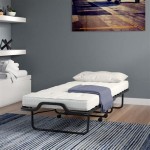What Is the Smallest Size Bedroom?
The concept of a "smallest size bedroom" is somewhat subjective and depends heavily on factors like personal preferences, the intended use of the space, and local building codes. There is no universally agreed-upon minimum size for a bedroom, and what might be considered comfortable for one person might feel cramped for another. However, certain guidelines and considerations emerge when discussing bedroom size, particularly in relation to functionality and safety.
Building Codes and Minimum Requirements
Building codes play a significant role in defining minimum bedroom sizes. These codes vary widely across regions, countries, and even individual municipalities. In general, building codes establish minimum areas for bedrooms, often factoring in factors such as window placement, egress requirements, and the number of occupants intended for the space. This ensures adequate ventilation, natural light, and safe evacuation routes within the bedroom. For instance, a local code might mandate a minimum area of 70 square feet for a single-occupant bedroom, while a bedroom intended for two occupants might require a larger minimum area.
Functionality and Comfort
Beyond building codes, functionality and comfort play key roles in determining a suitable bedroom size. A bedroom primarily intended for sleeping might require a smaller footprint than a bedroom that also serves as a home office or a play space for children. The layout of the bedroom, including the placement of furniture, also influences how spacious it feels. A well-designed small bedroom, incorporating clever storage solutions and multi-functional furniture, can feel more expansive than a larger bedroom with inefficient layout and cluttered arrangements.
Considerations for Small Bedrooms
Designing a small bedroom efficiently requires careful planning and the use of space-saving strategies. Some considerations include:
- Vertical Space: Maximizing vertical space through built-in shelves, wardrobes, and lofted beds can create a sense of spaciousness while minimizing floor area usage.
- Multi-Functionality: Opting for multi-functional furniture, such as a bed with built-in storage or a desk that doubles as a dressing table, optimizes space utilization.
- Minimalist Aesthetics: Embracing minimalistic decor with clean lines and a limited palette can create a sense of visual openness and reduce clutter.
- Natural Light: Ample natural light can make a small bedroom feel larger and more inviting. Maximize window size and consider using mirrors to reflect existing light.
Ultimately, the smallest size bedroom that is considered acceptable is a matter of personal preference and individual needs. By understanding building code requirements, prioritizing functionality, and implementing space-saving strategies, it is possible to create a comfortable and functional bedroom even within a limited footprint.

What Is The Minimum Bedroom Size Explained Building Code Trainer

Bedroom Sizes How Big Should It Be The Most Common Mistakes

Minimum Sized Bedroom Closet Ysis Architect S Blog

Kid S Bedroom Layouts With One Bed

Government Proposes Minimum Bedroom Size For Al Properties Ing Property The Guardian

Bedroom Sizes How Big Should It Be The Most Common Mistakes

Kid S Bedroom Layouts With One Bed

What Is The Minimum Size For A Habitable Room Per 2024 Irc Ncw Home Inspections Llc
Standard Room Size Specification Of Residential Building Homeslibro Blogs On Home Related Solutions

Does Bedroom Size Matter When It Comes To Designing Your Sleep Space Restonic







